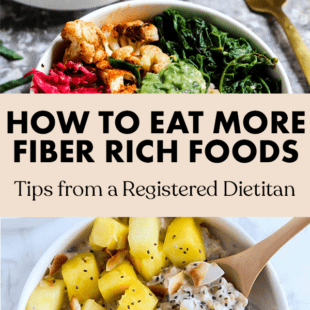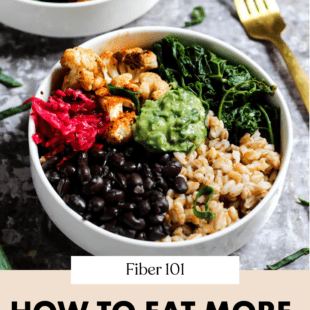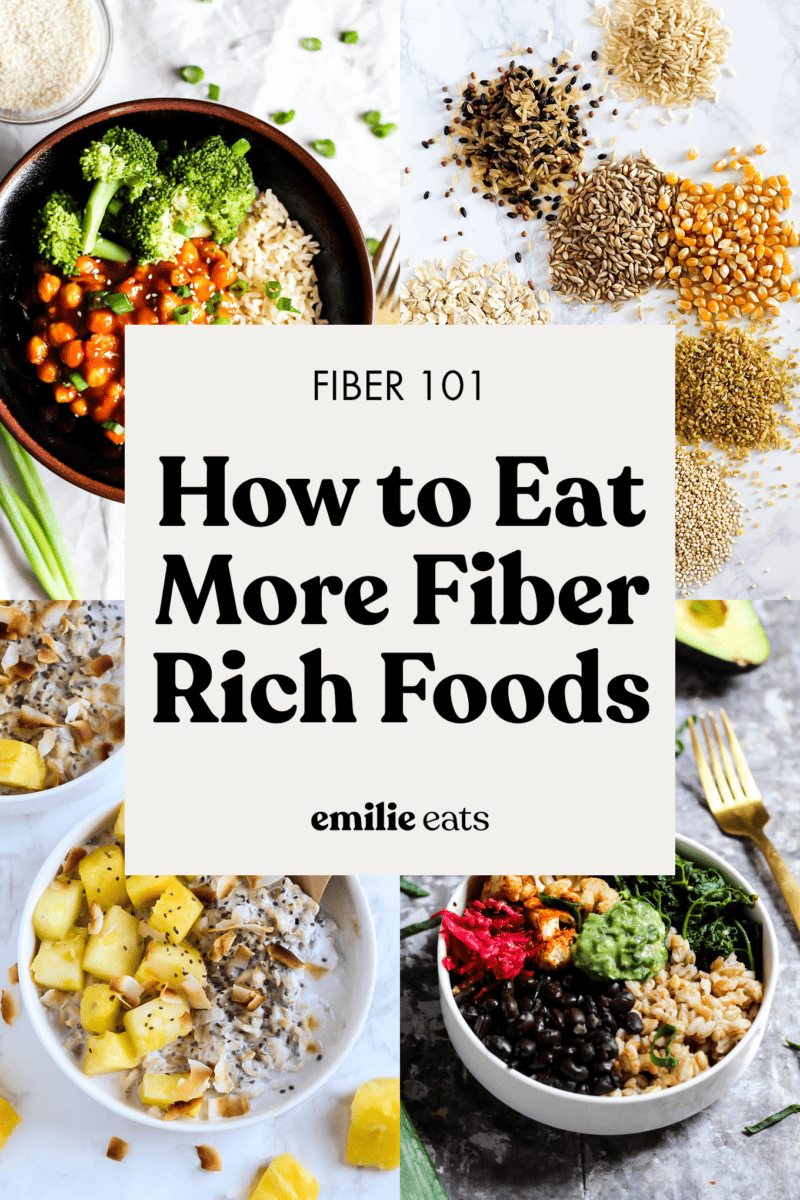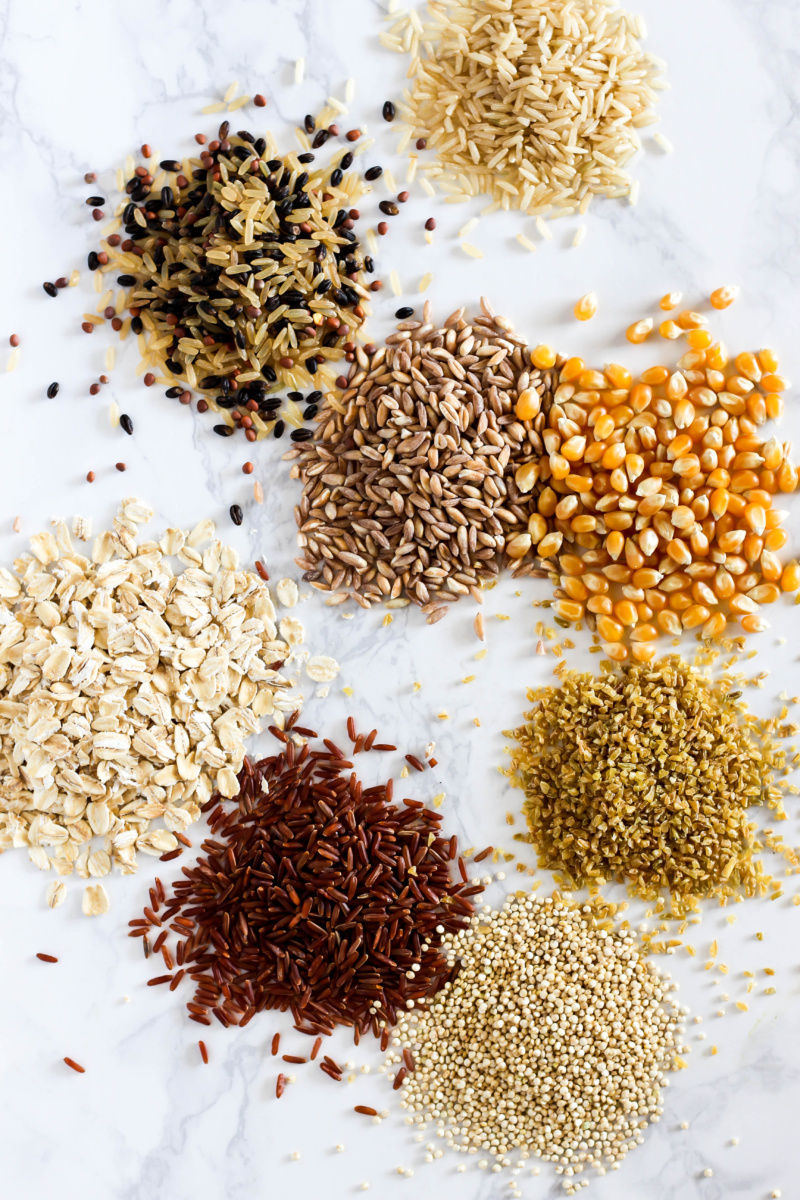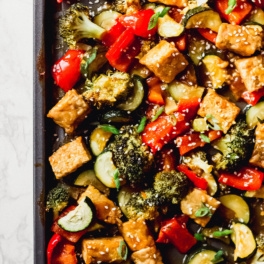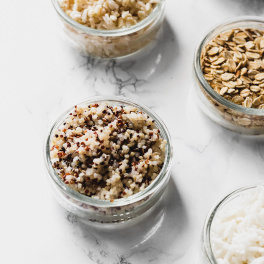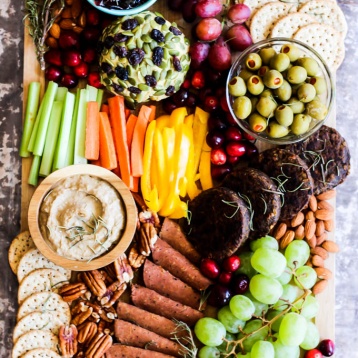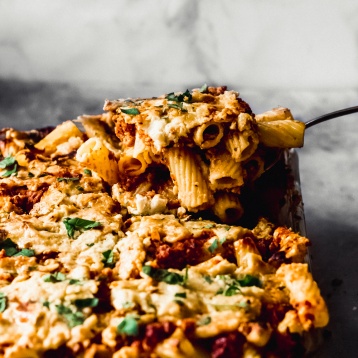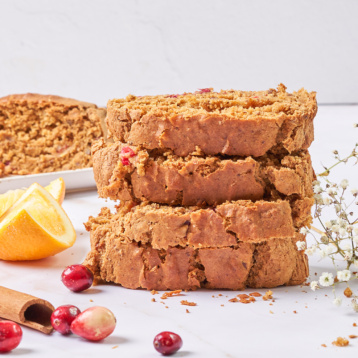What are fiber rich foods? How many grams of fiber per day do you need? And what does fiber do for the body anyway? Get all your fiber questions answered here!
Fiber 101: How to Eat More Fiber Rich Foods
You’ve probably heard people talk about how important it is to eat enough fiber. You’ve probably also heard that most Americans don’t get enough fiber in their diets. But let’s back up for a second. What even is fiber? And how many grams of fiber per day is considered enough? If we need to eat more of it, then what are the best sources of fiber?
When we think about maintaining a well-balanced diet, a lot of the time we think about finding balance among our macronutrients – carbs, fat and protein. I’m gonna guess that fiber doesn’t necessarily always come to mind for lots of us, and perhaps that’s why there are soooo many questions swirling around about fiber and how to make sure we get enough of it. Well my friends, let’s chat all things fiber!
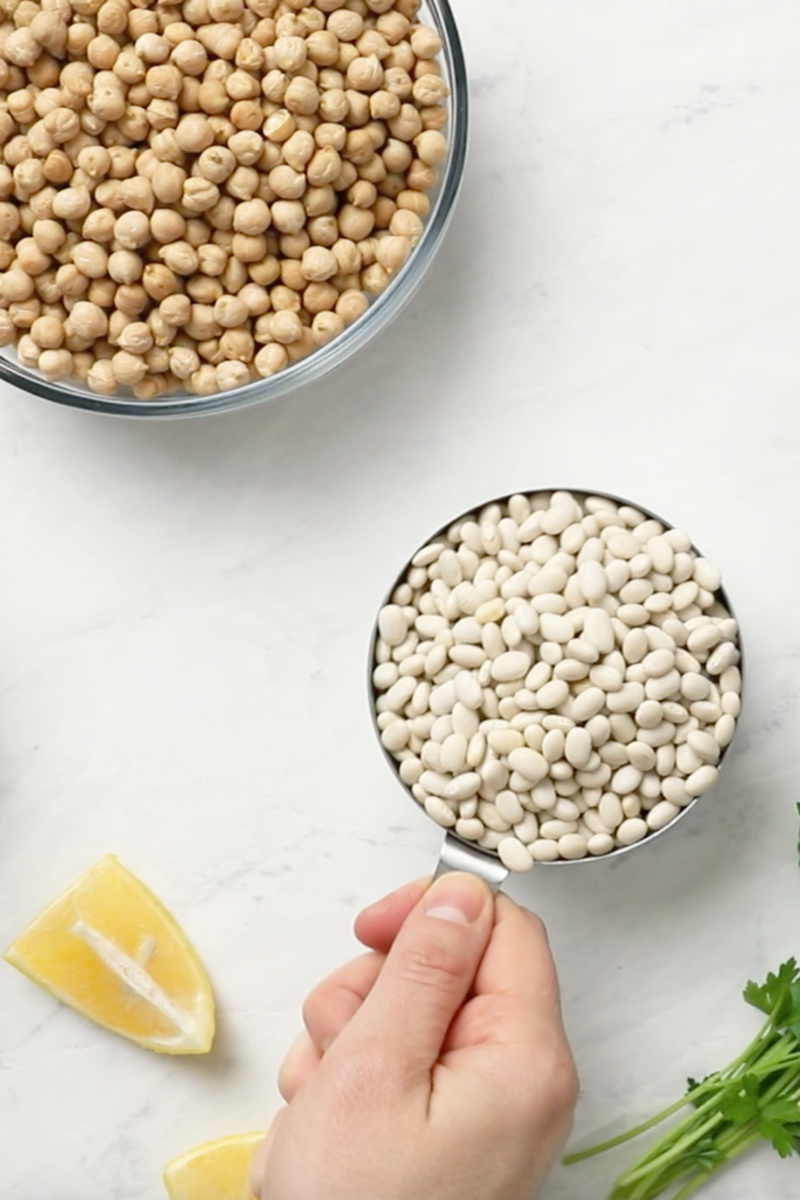
What is Fiber?
Dietary fiber is a type of carbohydrate found only in plant foods. Our bodies cannot digest fiber, but it is still beneficial to us for numerous reasons (more on that below). Research shows us that people who eat higher amounts of fiber have a lower risk of developing heart disease, metabolic syndrome, and type 2 diabetes, among other conditions!
Soluble Fiber vs Insoluble Fiber
First, let’s break down the two different types of fiber: soluble fiber and insoluble fiber. (PS—neither type of fiber is more important than the other!)
Soluble fiber dissolves in water and forms a gel that helps to keep us full and satisfied after a meal. Soluble fiber can improve blood glucose levels by slowing down the passage of carbohydrates in our digestive tract. Also, it can reduce LDL cholesterol (“bad” cholesterol) levels by pulling bile out of the body, preventing the creation of cholesterol.
Some soluble fiber is fermented in the colon into a number of by-products, including short chain fatty acids (SCFAs), which may help to improve gut health, fight inflammation, and play a role in maintaining the immune system.
Insoluble fiber does not dissolve in water. Rather, it adds bulk to the food moving through our digestive system. This helps to keep things regular, so insoluble fiber is especially important for preventing constipation. Just like soluble fiber, insoluble fiber can also help to keep us full after a meal.
Research shows that higher insoluble fiber intake is associated with lower risk of diverticular disease (small pouches that form in your colon). However, research showing an association between insoluble fiber intake and colon cancer risk is mixed.
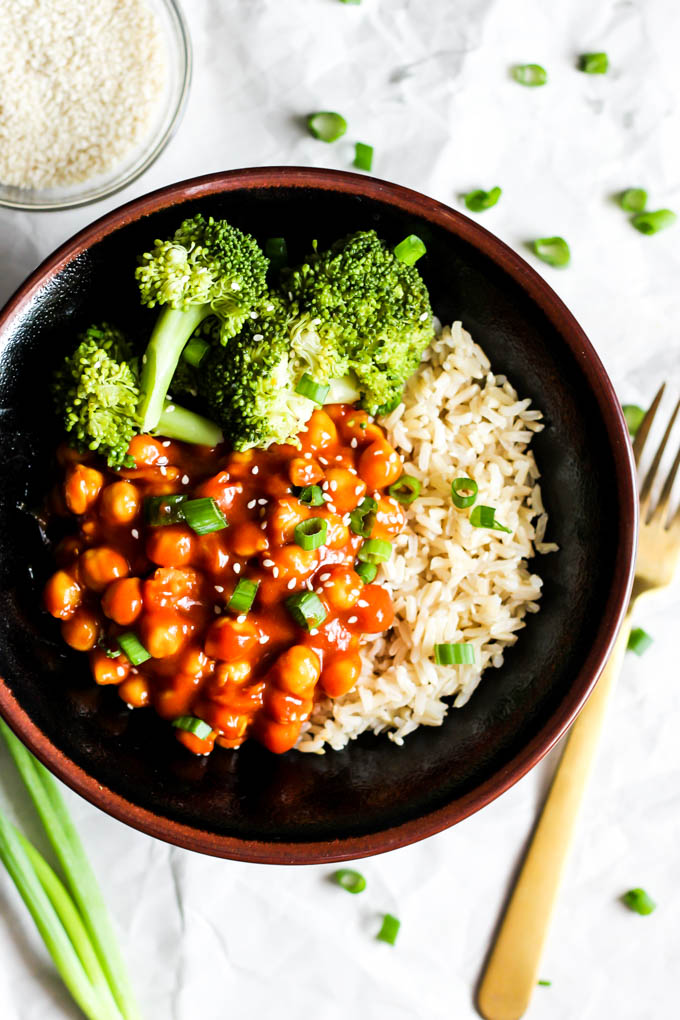
What Are Fiber Rich Foods?
Now that you understand how COOL fiber is and how important it is to eat fiber, let’s talk about what foods are high in fiber. Keep in mind—almost all plant foods like fruits, vegetables, whole grains, and legumes contain fiber. If you’re eating plenty of those, you’re doing a great job!
Foods high in soluble fiber include:
- Oats
- Apples
- Legumes like chickpeas, edamame, lentils, black beans, and split peas
- Citrus fruits
- Berries
- Chia seeds
- Flax seeds
- Avocados
- Barley (not suitable for those with celiac disease)
Foods high in insoluble fiber include:
- Whole grains like whole wheat, wheat bran, brown rice, popcorn, and quinoa
- Vegetables like cauliflower, zucchini, cucumber, celery, and asparagus
- Beans and lentils
- Root vegetables like potatoes and carrots
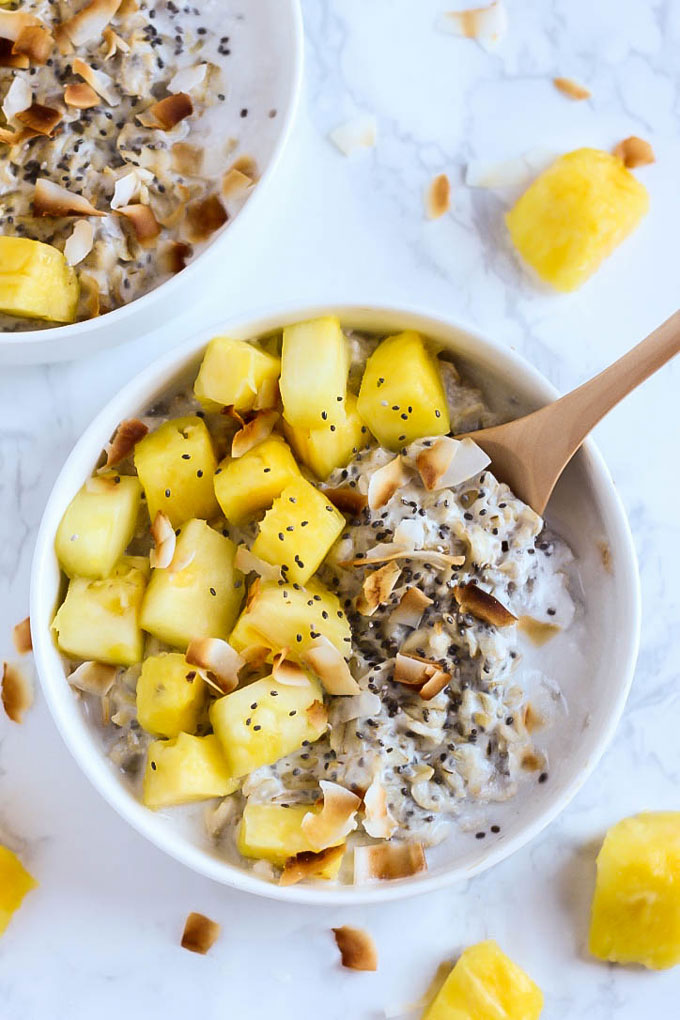
How Many Grams of Fiber Per Day Are Recommended?
It is recommend that women should eat 21 to 25 grams of fiber per day and men should eat 30 to 38 grams of fiber per day. Those numbers include both soluble and insoluble fiber from food, but they do not include fiber from supplements.
When you first start eating more fiber rich foods, it may take a few days of intentionally making sure you’re hitting those recommendations every day. But don’t worry—you won’t be counting fiber grams forever (we don’t really do counting here!). Once you get the hang of including more fiber rich foods in your diet, you’ll be a pro at hitting those recommendations without much thought.
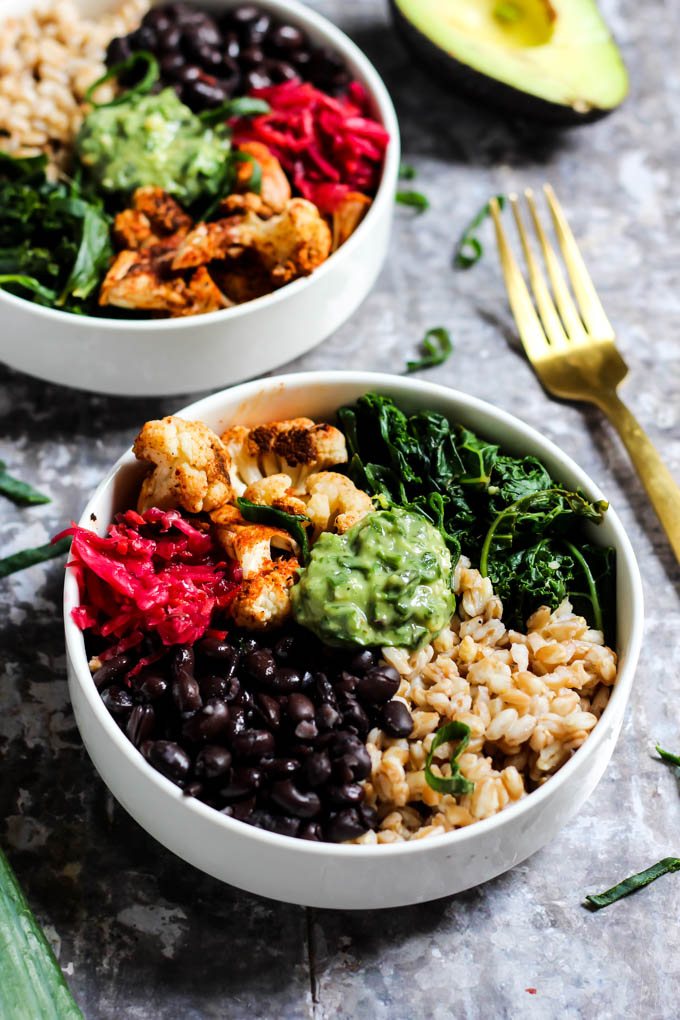
How to Eat More Fiber
Finally, here are some swaps to consider making from low fiber foods to fiber rich foods:
- White bread —> Whole grain bread
- Ground meat —> Beans and lentils (even swapping 50% of the ground meat is a great idea!)
- Chips for a snack —> Fruit or vegetable along with chips for a snack
- Dinner without a vegetable —> Dinner with a vegetable (try roasted zucchini or buffalo cauliflower)
- Meat chili —> Meat chili with beans
- Cereal for breakfast —> High fiber cereal, chia pudding, or oatmeal (add fruit for more fiber!)
(Remember, you don’t have to make these swaps all the time. Sometimes we want low fiber foods and that’s totally okay!)
Have questions about fiber? Leave them down in the comments!

